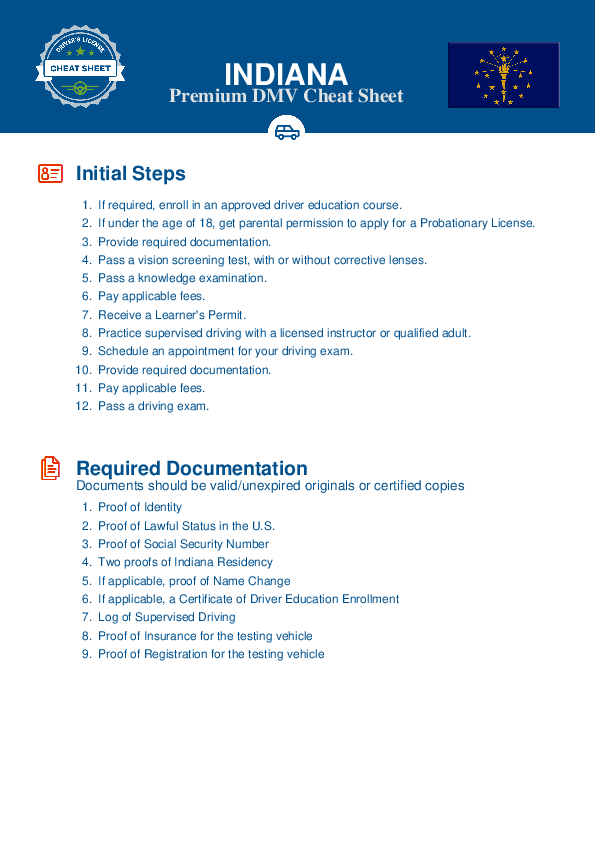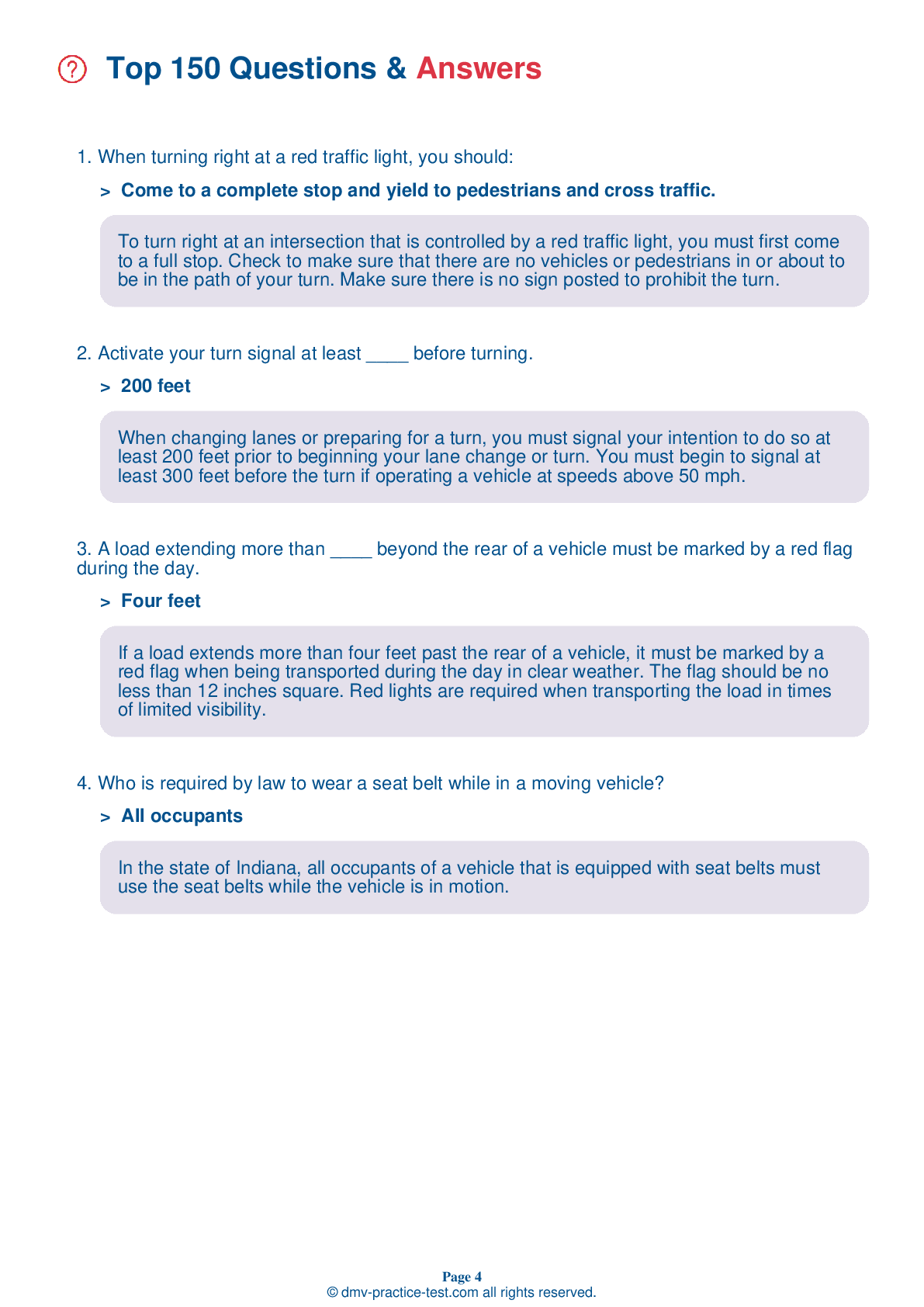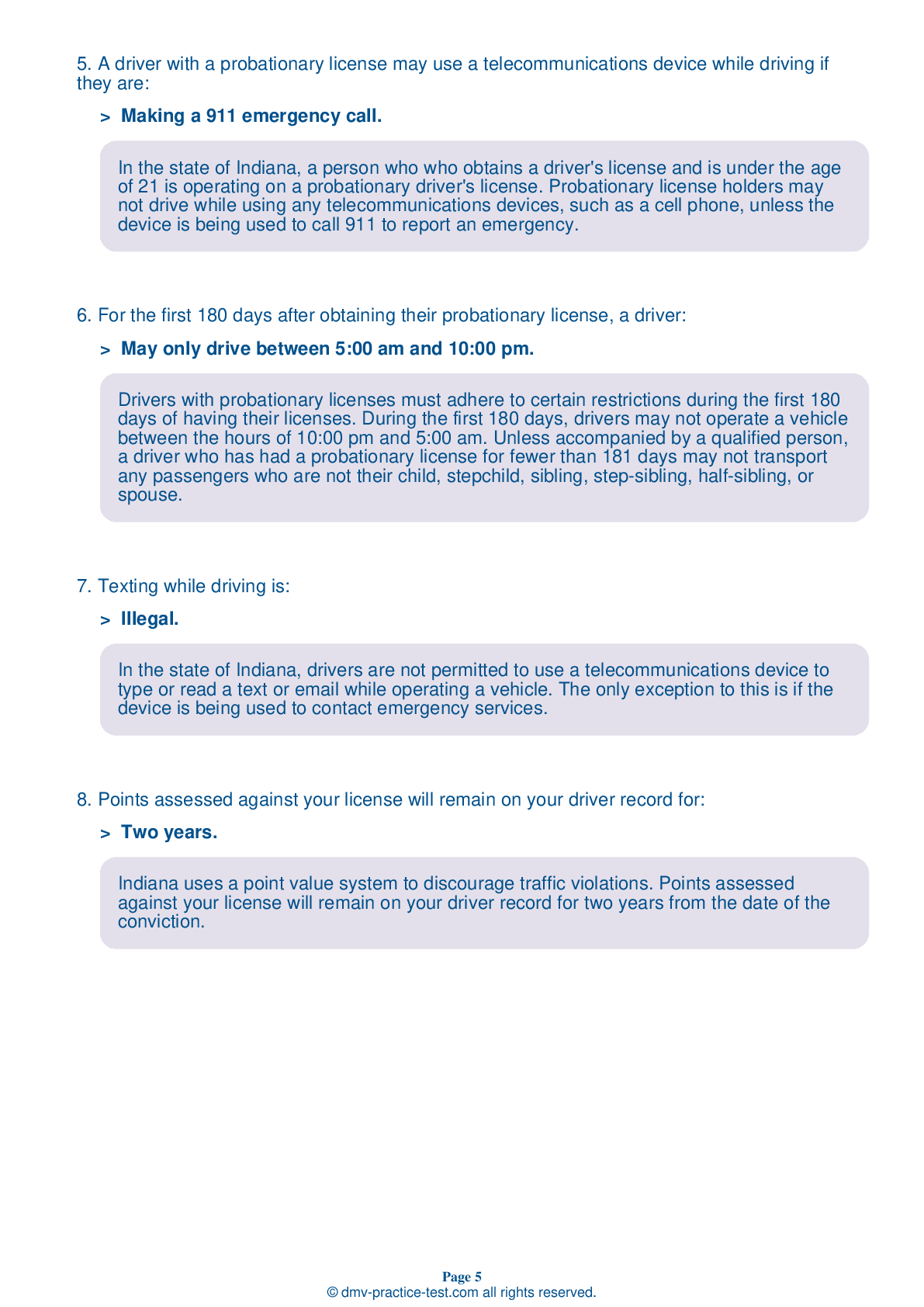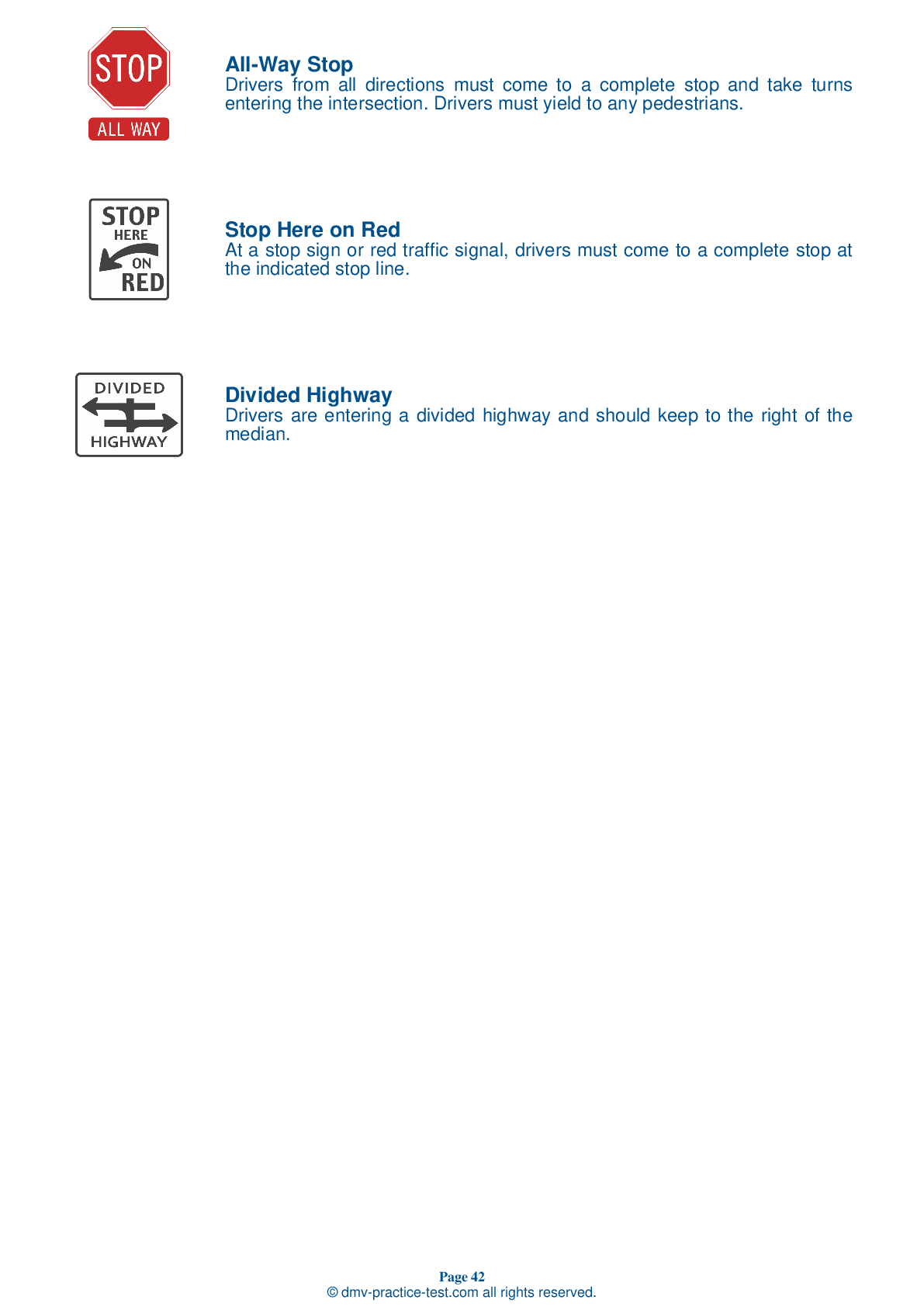FREE Indiana DMV Practice Test #21 Page 5 of 5
This set of Indiana DMV practise tests has been updated for January 2025. It includes questions based on the Indiana Driver Handbook's most significant traffic signals and laws for 2025. Use actual questions that are very similar (often identical!) to the DMV driving permit test and driver's licence exam to study for the DMV driving permit test and driver's licence exam.
On the practise exam, each question gets a tip and explanation to help you remember the concepts. The written component of the official Indiana DMV test will include questions about traffic rules, traffic signs, and driving statutes, as well as information from the Driver Handbook.
To obtain a passing grade, you must correctly answer 44 of the 50 questions. Take our DMV practise exam to help you prepare for your Indiana instruction permit or driver's licence.
The DMV exam is available in several languages.
Using any kind of testing assistance will result in an automatic fail, and the DMV may take additional action against your driver's licence, so stay away from it.
39 . Which is not a factor in determining the distance that it takes to stop your vehicle?
The distance required to stop your vehicle depends on perception time, reaction distance, and braking distance. This changes with speed and road conditions.
40 . Guide signs are ____ signs that provide directional and mileage information to drivers.
Guide signs, sometimes known as destination signs, have a green background and provide directional and mileage information to specific destinations. They can be a helpful resource when driving in unfamiliar locations.
41 . This sign means:
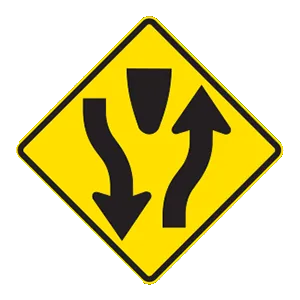
Warning signs prepare drivers for upcoming road conditions and hazards and are usually yellow with black markings. This sign tells drivers that the road will soon become a divided highway.
42 . This sign means:
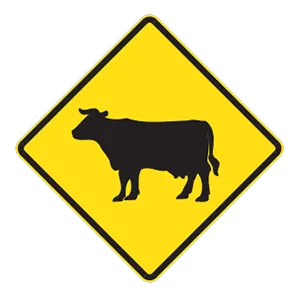
Warning signs prepare drivers for upcoming road conditions and hazards and are usually yellow with black markings. This sign alerts drivers to potential crossing cattle.
43 . If you leave your vehicle unattended, you must:
When you leave your vehicle unattended, you must stop the engine, lock the ignition, remove the key from the ignition, and set the parking brake.
44 . Allow a larger space cushion than usual when stopping:
You should allow more space in front of your vehicle than usual when you are stopped on an uphill slope. If the vehicle in front of you rolls backward toward your vehicle when traffic begins to move again, it is less likely that there will be a collision.
45 . Which of the following recommendations does not promote safe night driving?
If you look into the headlights of an oncoming vehicle, the pupil of your eye will contract. After the oncoming vehicle has passed, there will be an interval of time during which the pupil must readjust to the less intense light. During this recovery period, you are virtually driving blind.
46 . Who is required by law to wear a seat belt while in a moving vehicle?
In the state of Indiana, all occupants of a vehicle that is equipped with seat belts must use the seat belts while the vehicle is in motion.
47 . This sign means:
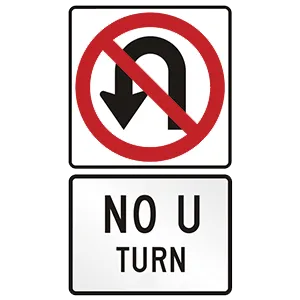
A regulatory sign displaying a red circle with a red slash through the middle indicates that a specific action is prohibited. U-turns are not permitted where this sign is posted.
48 . This sign means:
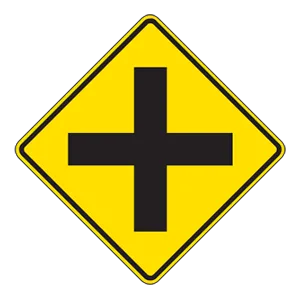
Warning signs prepare drivers for upcoming road conditions and hazards and are usually yellow with black markings. This sign alerts drivers to an upcoming intersection.
49 . Round signs indicate:
Round signs warn drivers of an upcoming railroad crossing area. Drivers should use extra caution when approaching a railroad crossing.
50 . Anything that requires you to ____ could cause you to crash.
Anything that causes you to take your attention away from driving, take your eyes off the road, and/or take your hands off the wheel is a distraction.
Need Car Insurance? No problem!
Compare the best rates in Indiana and find a personalized policy that meets your needs.
1. Are You Currently insured ?
2. Married ?
3. Do you own your Home?
4. Do you have more than 1 car ?
5. Have you or a Family Member Honorably Served in U.S. Military ?
6. Your Name
7. Age
8. Zip code
IMPORTANT REMINDER:Auto Insurance is Mandatory to drive in Indiana. Get covered before you hit the road to avoid any fines.
Ranked by best match
